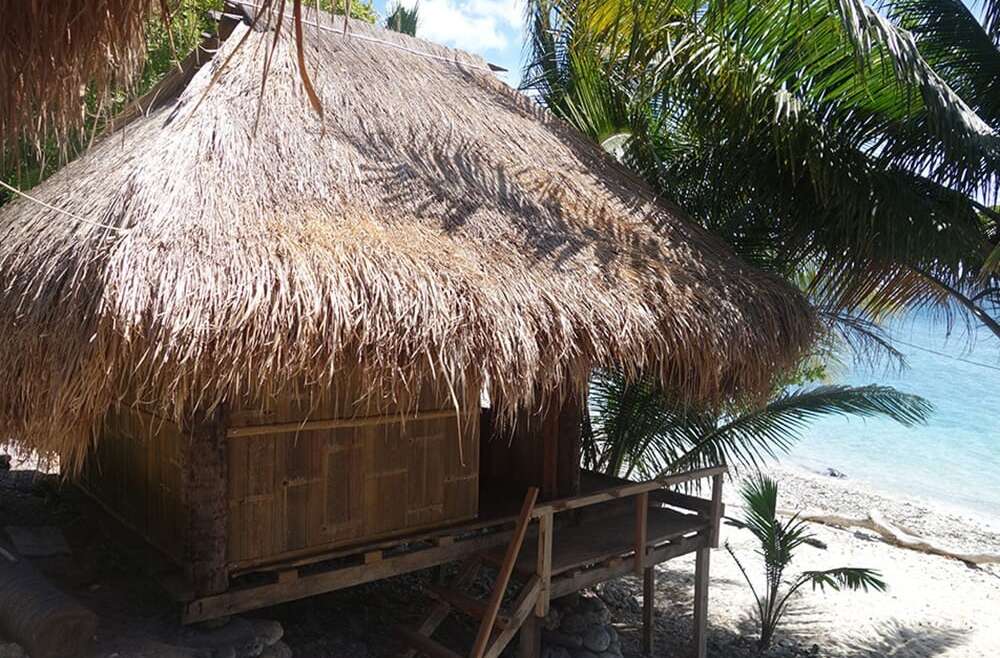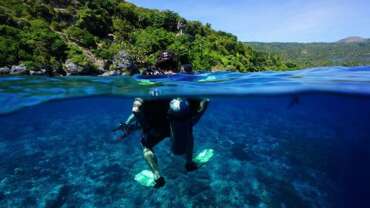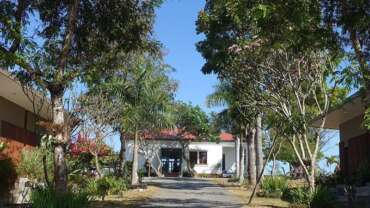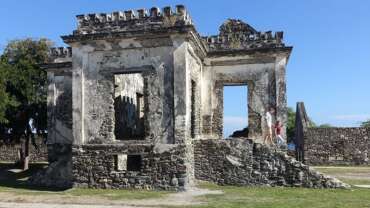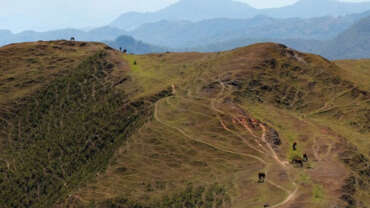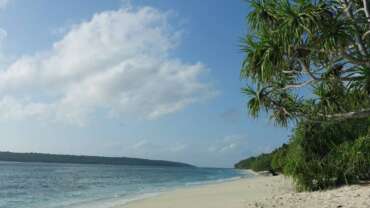Experiences in Timor Leste
NATIONAL PARKS
In 2007, the Government of Timor-Leste declared its first national park, Nino Konis Santana National Park. This national park includes the entire eastern tip of Timor-Leste and the waters off shore. It was named after the commander of the Falantil who was born locally in Tutuala and died in 1998.
Covering 123,600ha from forested mountain ranges to a marine area with magnificent coral reefs, the park also includes Lake Ira Lalaro and Jaco Island. The adjoining reef system is part of the globally significant ‘Coral Triangle’ having extremely high diversity of reef fish and coral species.
The dense forest within the park includes both tropical lowland vine forest thick with orchids and ferns, as well as monsoon forest with banyan, rosewood and fig trees. Rusa deer, cuscus, monkeys, over 200 species of birds and five species of sea turtles are resident wildlife.
Furthermore this national park’s designation is of enormous cultural significance with many sacred sites located within the boundary. Limestone caves, some with ancient rock art are good examples.
While the Nino Konis Santana National Park is still in the process of being established in terms of facilities and enforced protections its designation is an important step in the on-going conservation of this beautiful and environmentally important area.
PROTECTED AREAS IN TIMOR LESTE
In addition to the Nino Konis Santana National Park, the Government has indicated its interest in protecting other significant areas through implementing the UNTAET Regulation on Protected Areas. The fifteen terrestrial areas designated for protection include significant mountain peaks, forest remnants, coastal swamps, several beautiful beaches and Jaco Island. These areas are treasured by the Timorese for many reasons – historical, cultural and environmental. In their protection it is also recognised natural scenery and wildlife viewing are of importance for developing tourism.
Timor-Leste’s reefs are globally significant due to their extremely high bio-diversity and five marine protected areas have been identified, with Com, Tutuala, Lore and Maubara already designated. The establishment of a fifth marine protected area at Vila-Maumeta (Atauro) is currently being finalised. Such marine reserves help maintain reef health – important for both sustaining local communities and as a basis for building eco-tourism.
POPULAR LOCATIONS
Timor-Leste is an intriguing new tourism destination and attracting an increasing number of international travellers keen to experience its coral reefs, beaches, rugged mountains and rich cultural heritage.
Those already holidaying in Timor-Leste are drawn for many reasons – from desire for a relaxing short break somewhere different to wanting to go exploring in a new destination off the beaten track by 4WD and motorbike. Many have a specific interest they wish to pursue – culture and history, diving, hiking, whale and dolphin watching, mountain biking and birding.
All municipalities of Timor-Leste have something special to offer travellers and to help you plan your trip we’ve identified Timor-Leste’s most popular locations.
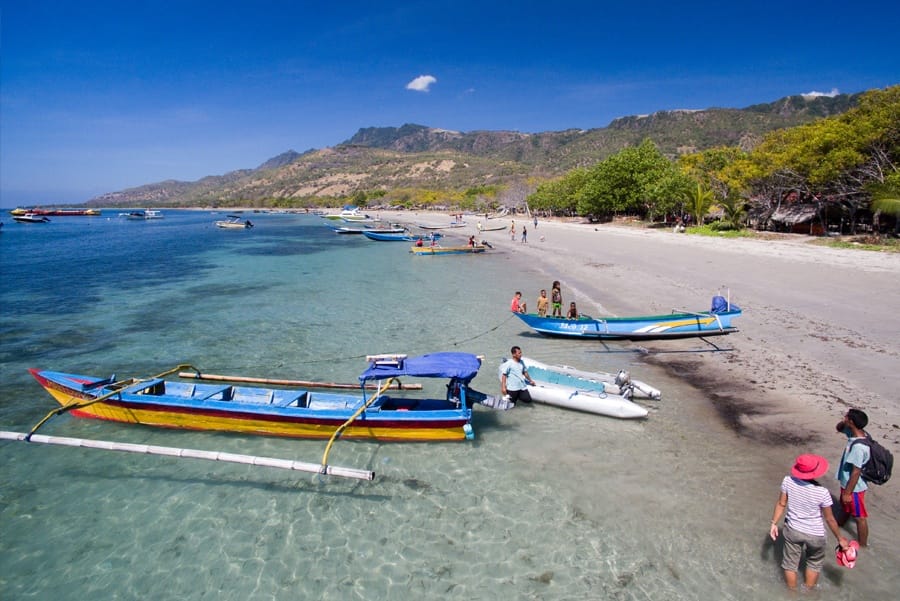
ATAURO
Atauro Island offers world class diving and snorkelling on its fantastic reefs. Recent research shows Atauro Island has the highest diversity of reef fish and coral species of anywhere on earth. It is also perfect for beach relaxing, swimming and hiking. It has a very friendly, hospitable and welcoming vibe. Boat access from Dili can be easily arranged and there is a good range of accommodation including small eco-resorts available.
BALIBO
The small hill-town of Balibo near the land border in the western part of Timor-Leste has an old fort which provides expansive views of the surrounding country side. Within the fort is a boutique hotel and restaurant. At the hotel guided visits to local villages and caves can be organised. Across the road from the fort, Balibo House provides information on what happened during the Indonesian occupation, including the massacre of the Balibo Five.
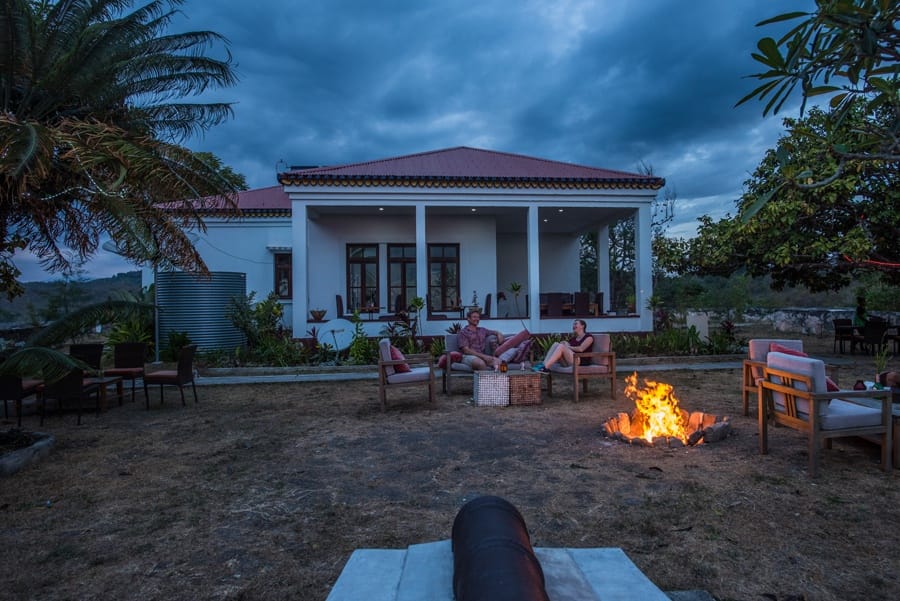
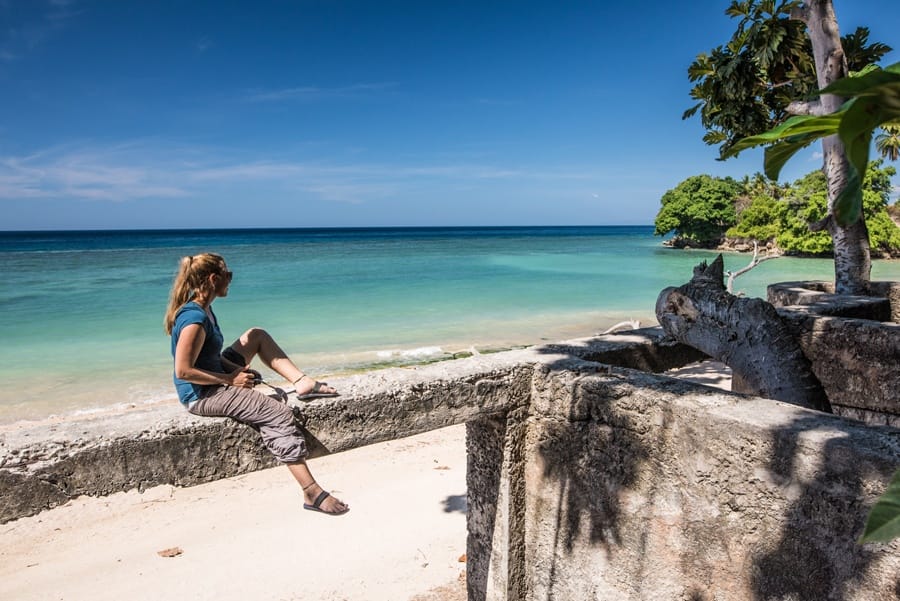
BAUCAU
Baucau lying to the east of Dili has an old town with a charmingly raffish air due to its colonial buildings and huge banyan trees. There is a beautiful old swimming pool fed from a clear natural spring and the flamboyant pink Pousada de Baucau overlooks the town centre.
Baucau is Timor-Leste’s second biggest centre and has a range of accommodation and restaurants available. Down at the sea a short drive from Baucau you’ll find a small fishing village and a spectacular coastline of white sand beaches and rocky coves.
COM
Com is a small fishing village on the western edge of the Nino Konis Santana National Park in Lautem. It has beautiful creamy white beaches stretching in both directions. A small resort and guest houses line the beachfront. Activities such as fishing can be arranged. It has a relaxing, serene air and is the perfect place to enjoy Timor-Leste’s magnificent tropical sunsets.
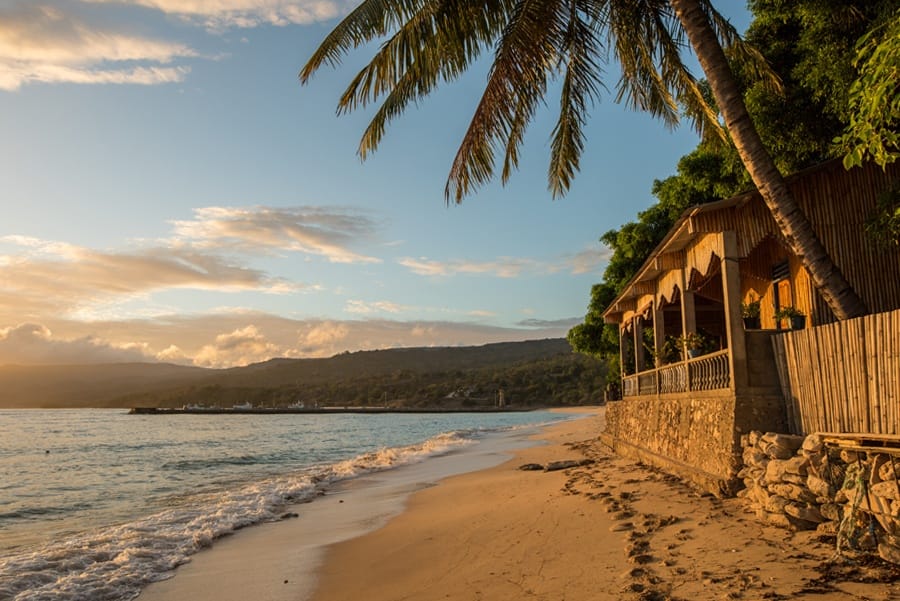
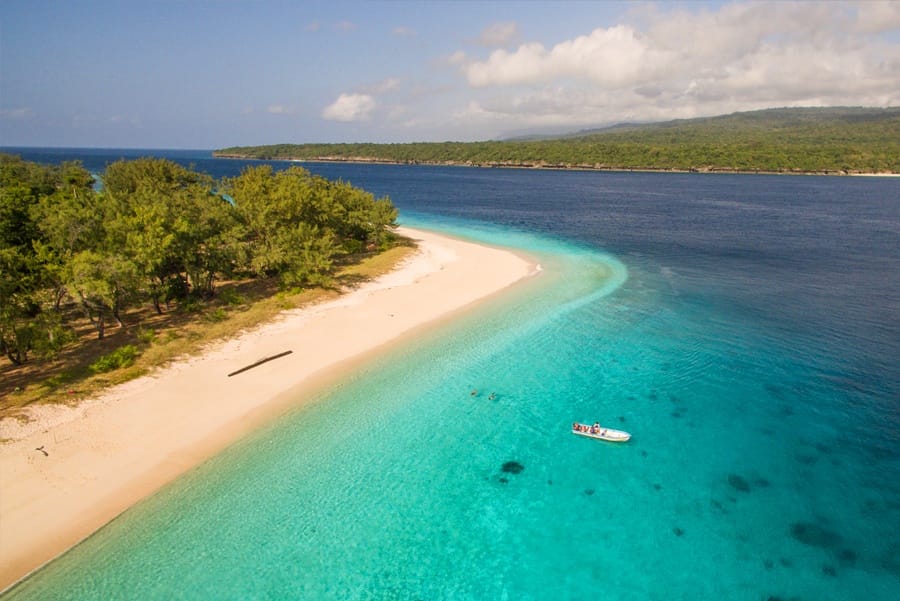
JACO, VALU & TUTUALA
Jaco Island lies across from Valu, a lovely beach area backed by forested limestone escarpments, at the far eastern tip of Timor-Leste. Sacred Jaco Island is a tropical paradise. Its transparent waters teem with underwater life and offer fantastic diving, snorkelling and swimming.
Day access to the Island is by small fishing boat. Accommodation at Valu ranges from eco-camping to guest houses. Guided trips through the forest to the local caves within the Nino Konis Santana National Park are another highlight. The drive down to Valusere from Tutuala is very steep in places and requires a 4WD vehicle. At the top of the Tutuala escarpment from the local pousada the views out to sea and across the forested ranges of the national park are stunning.
MAUBARA & LIQUICA
Maubara and Liquica are two coastal towns located an easy drive west of Dili. Timor-Leste’s colonial past is very apparent with many Portuguese buildings and a Dutch fort. Maubara is known for its skilled basket weavers. There are small resorts and other accommodation along this coast and the beaches offer good swimming and diving.
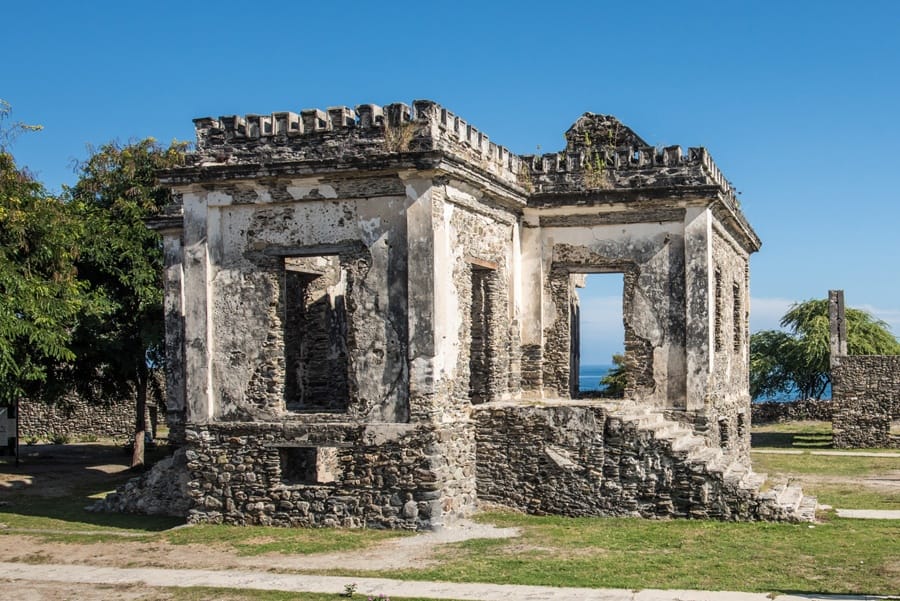
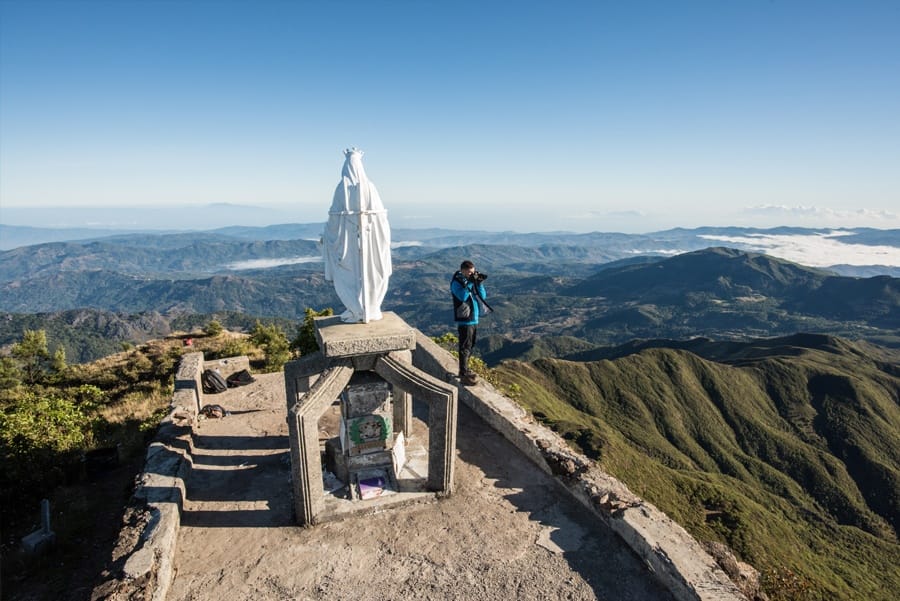
MT RAMELAU & HATO BUILICO
A highlight for many of a holiday in Timor-Leste is a guided hike from the village of Hato Builico, located high in the Tatamailau range (2000m), to the summit of Mt Ramelau to watch the sun rise. In all directions the views are stunning. Other guided hikes also can be organised in the surrounding valleys and to nearby traditional villages from the guest houses. A good 4WD vehicle or motorbikes are needed to access Hato Builico due to the steep mountainous terrain.
MAUBISSE
Maubisse is perched on a ridge at a height of around 1400m in rugged mountains and is surrounded by spectacular scenery. It’s an old hill town and makes a delightful break from the heat and humidity of the coast. Guided walks can be arranged to traditional Mambae villages and it is a good place to learn more about coffee growing. Guest houses available include the fine old Maubisse pousada offering expansive views.
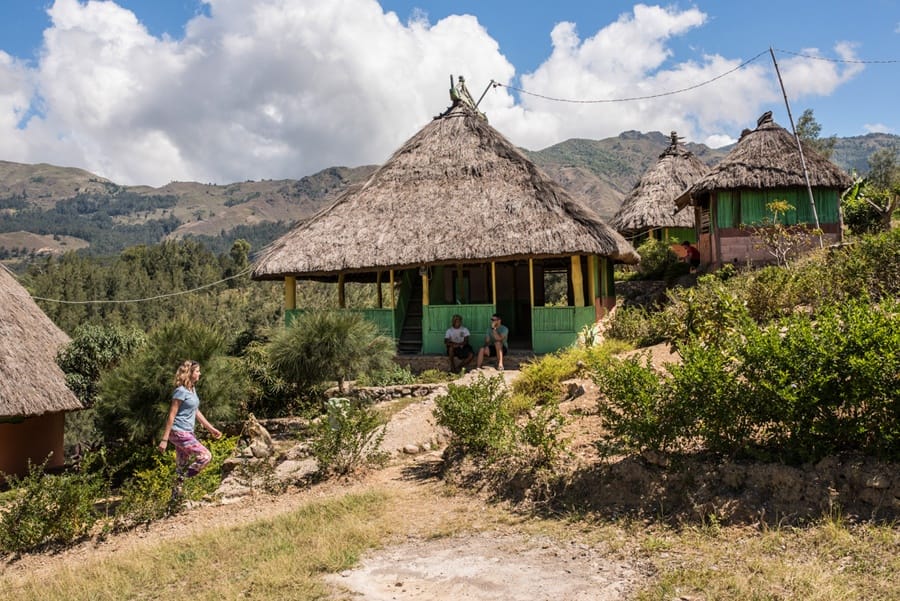
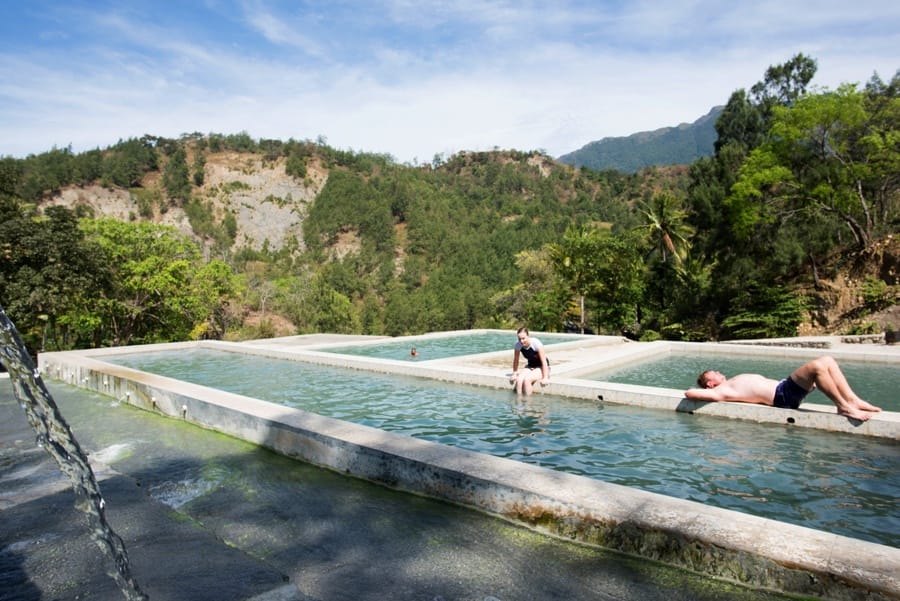
MAROBO
The Marobo geothermal hot springs are located near Bobonaro in beautiful mountain country. Lying back in the hot water pools having a soak looking out over the valley is a very blissful experience. Most visitors travel up from their accommodation in Maliana or Balibo by motorbike or 4WD vehicle.
LOI HUNU, MUNDO PERDIDO & MT MATEBIAN
Inland from Baucau, Loi Hunu lies in lush countryside. The drive there is quite beautiful with impressive views of Mt Matebian and other ranges along the way. At Loi Hunu it is very relaxing and there is refreshing swimming in the nearby river.
It is also a great location for organising a guided hike of Mundo Perdido, a mountain range with dense rainforest and rich bird life. The guesthouse owners are also happy to arrange hikes to limestone caves and other locations of importance during the Timorese resistance, plus cooking lessons in the nearby village. Climbing Mt Matebian (2315m) can be organised from Baguia and other villages on its flanks.
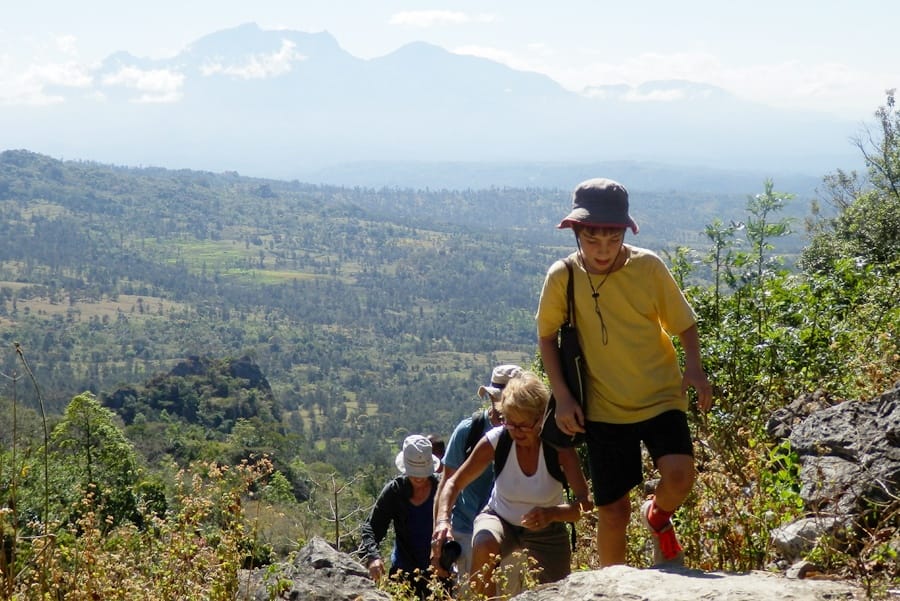
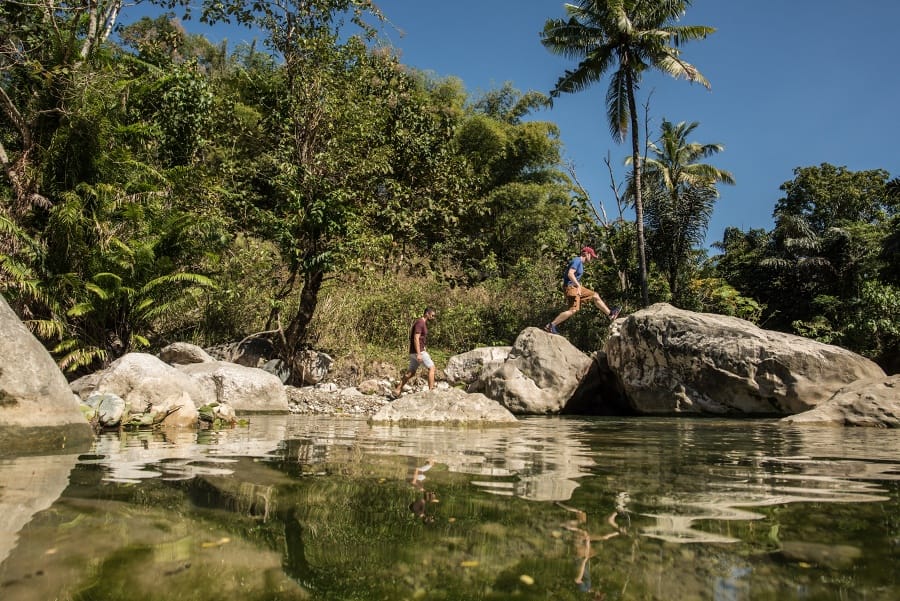
SAME
Same is located in a lush tropical river valley, part way between Timor-Leste’s highest mountains and the wild south coast (Tasi Mane). Same is an excellent location for hiking Mt Kablaki, swimming in the nearby river and general relaxation. The town has some interesting old Portuguese buildings and is an easy drive to Betano on the coast with its sweeping black sand beaches. Same has some good accommodation.



